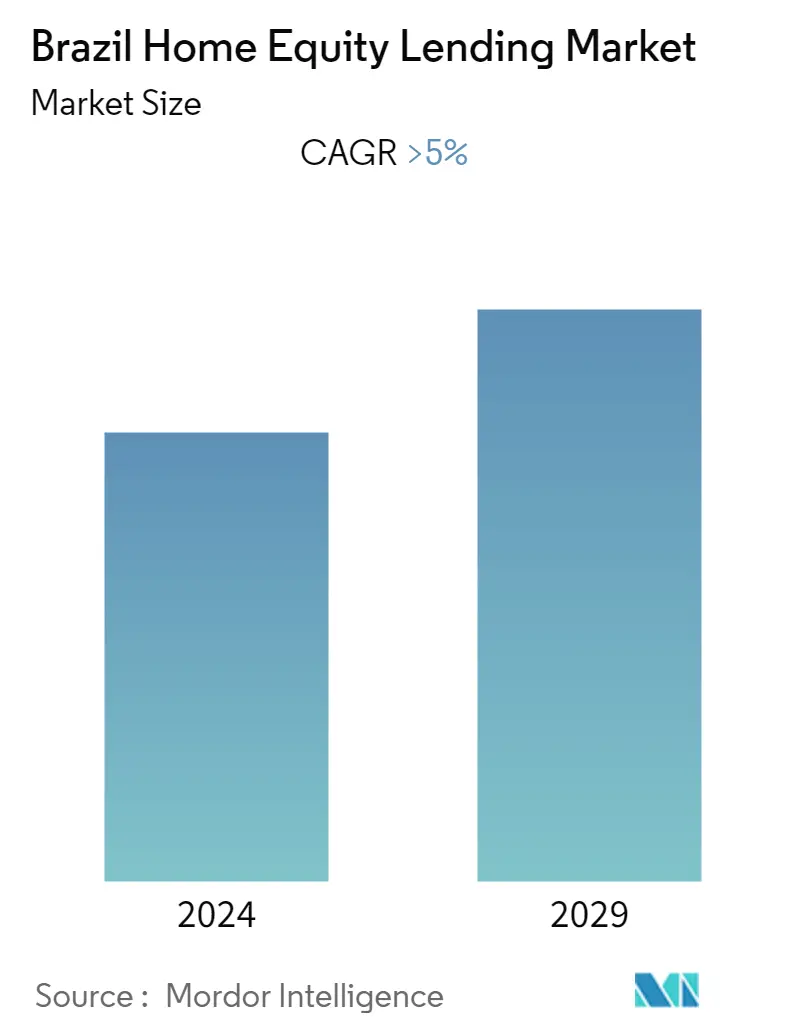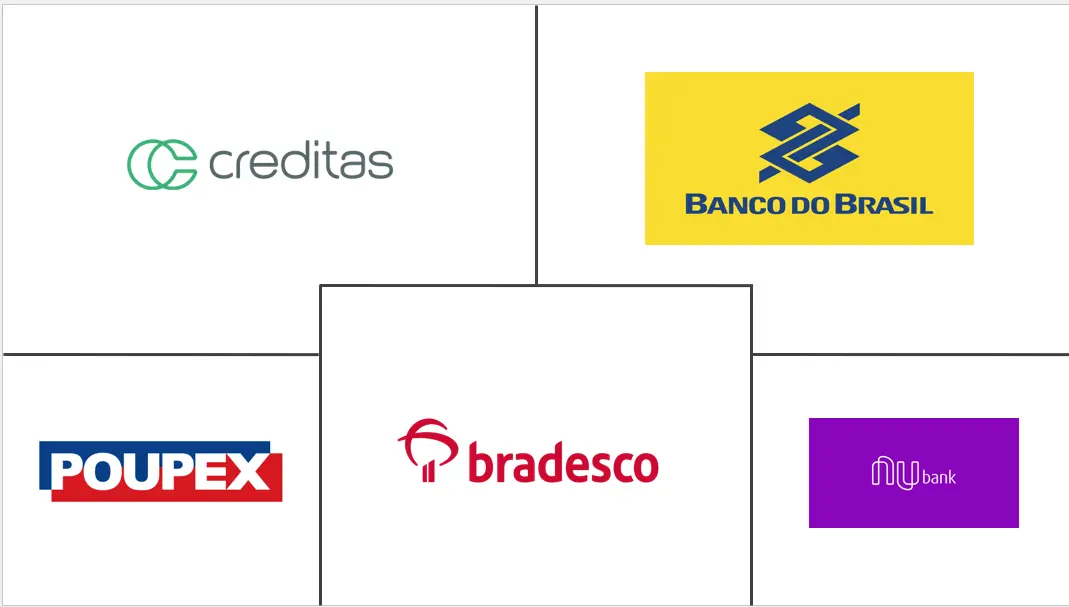Market Size of Brazil Home Equity Lending Industry

| Study Period | 2020 - 2029 |
| Base Year For Estimation | 2023 |
| Forecast Data Period | 2024 - 2029 |
| Historical Data Period | 2020 - 2022 |
| CAGR | > 5.00 % |
| Market Concentration | Medium |
Major Players
*Disclaimer: Major Players sorted in no particular order |
Need a report that reflects how COVID-19 has impacted this market and its growth?
Brazil Home Equity Lending Market Analysis
The home equity loan sector in Brazil is slowly recovering as a result of a more favourable economic situation. Originations for home equity loan products have climbed about 15% since 2014, with the number of new credit lines at its highest level since the 2008 economic crisis. Bank lending and borrowers' financial health in Brazil concluded 2019 on a high note, according to central bank data, despite the background of significant credit growth.
In December, the amount of outstanding loans in Latin America's largest economy grew to 3.47 trillion reais (USD 826.4 billion), up 1.6% from the previous month and 6.5% from the previous year, the second yearly increase in a row. The results represent an increase in the demand for and availability of private-sector bank loans free of government interference, as opposed to credit given by state-run enterprises.
Brazil's recovery from the 2015-16 recession was precarious even before the crisis began, and its fiscal headroom was restricted. Significant successes, like as the 2016 expenditure cap regulation (teto dos gastos) or the 2019 pension reform, did not have enough time to produce fruit before CoVID-19 overwhelmed the world and Brazil. The epidemic, and the health-care reaction to it, have essentially resulted in two shocks for Brazil: an external shock, which includes international demand and pricing, and a local shock, which includes unemployment. High corporate and, in certain cases, national debt was already a source of worry prior to the outbreak of COVID-19. Rapid and substantial loan support has boosted debt levels, particularly in the hardest-hit industries. Addressing the debt overhang, including enabling the market departure of unviable corporations and encouraging the efficient reallocation of resources to viable firms, might be a crucial issue for policymakers in the future.
WFH arrangements promoted digitisation in financial services by promoting the deployment of new technology. While it appears that outsourcing to third-party providers, such as cloud services, has improved operational resilience at financial institutions, greater dependence on such services may introduce new issues and risks. Effective risk management across the supply chain is critical for managing operational and cyber risk.
Home equity is expected to rise from 3% to 20% of Brazilian GDP in 20 years if bureaucracy such as decentralised property registration, guarantees, and legal conflicts are abolished. In Mexico and Chile, two additional Latin American nations, home equity accounts for around 10% and 14% of GDP, respectively.
